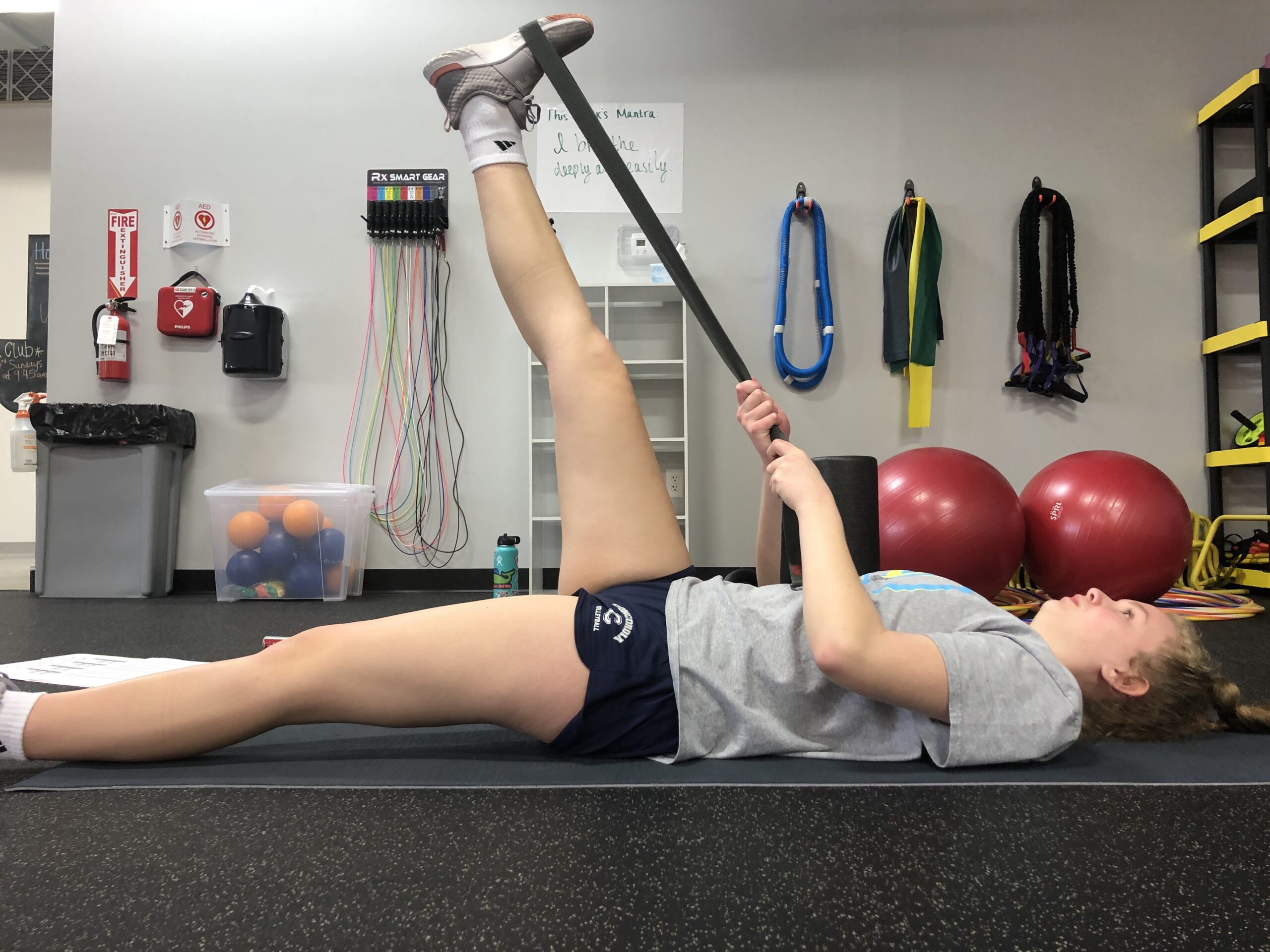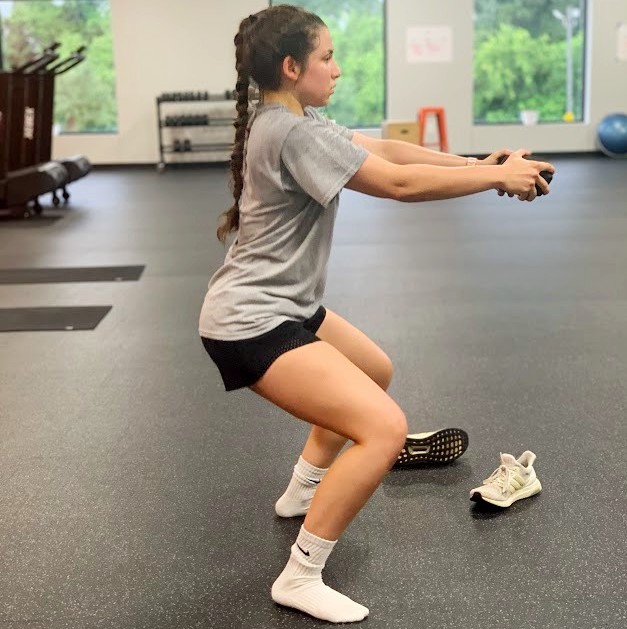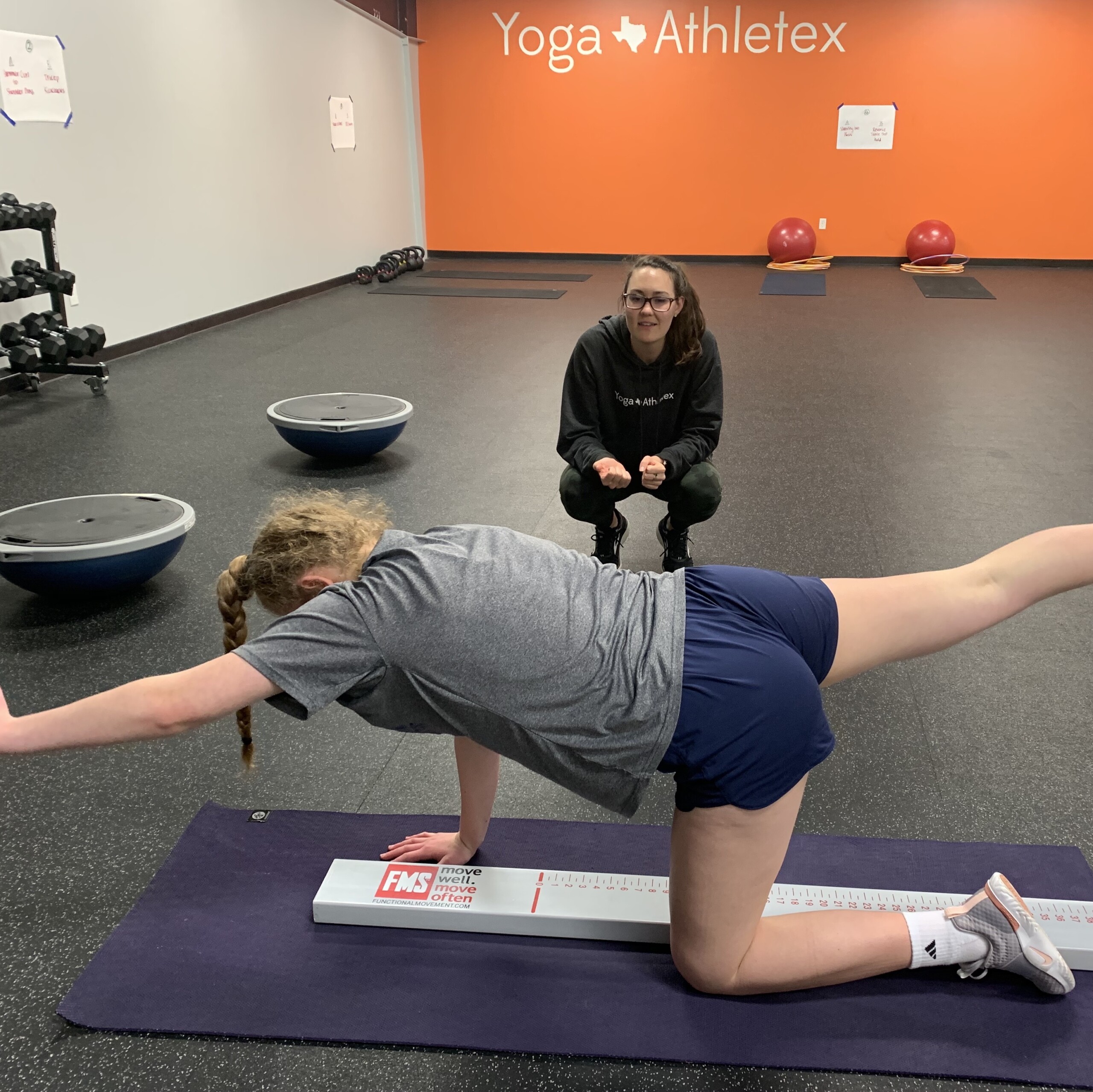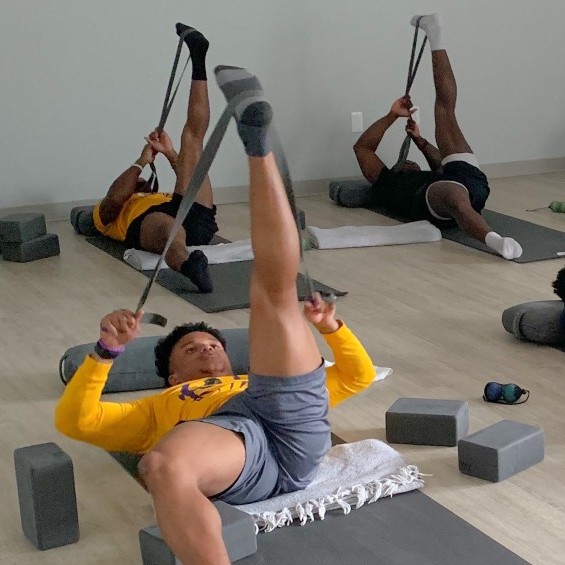Functional Movement Screening
Your Pre-Season priority should be completing a Functional Movement Screen (FMS), not determining a 1 rep max (RM).
Optimal Performance Training
At Yoga Athletex, we follow a very important programming model: The Optimal Performance Training model (OPT Model). Through our staff’s National Academy of Sports Medicine (NASM) certifications, we provide a safe, simple and science-based training program for youth, elite and professional athletes alike. We start with corrective programming to maximize quality and limit compensations. We do this through visual movement assessments in the gym, but more importantly with FMS.
The Importance of Movement Quality
According to NASM, at most levels of performance enhancement, sports specificity is more of a marketing message than a systematic approach. Furthermore, the areas of strength and conditioning and performance enhancement have been increasingly researched and improved over the past 25 years. Over the years, we have also learned a great deal about reducing the risk for injury.
We agree, two areas that remain insufficiently addressed in sports training and yoga, are the effective assessment of movement competency to maximize movement quality and the systematic implementation of periodization and coaching methods to maximize results. As you may have heard us mention, instead, we continue to see outdated, inappropriate or even risky practice methods and an overemphasis on “sport-specific” movements that lead to overuse injuries. The purpose of this blog post is to announce, or reiterate, our focus on Pre-Season programming and implementation for the high-school athlete.
Progress Safely
Our first goal with our athletes is to gain a proper assessment of individual movement through our FMS screening protocol. By assessing the athlete, we are able to address compensations and maximize a stable training platform to prepare them for strength development, power movements and conditioning needs. Our intent is to properly prepare and progress the athlete as the grow within the Long Term Athletic Development, or LTAD, model. This way the athlete and coaches are better equipped to focus on specialization of movements as they move from freshman to senior year, and well into college.
After a FMS screen, we are able to maximize our programming and limit compensations as we progress through the OPT model. Training athletes in a group environment can be challenging, so this process allows us to get a head start in prepping the athletes for sport performance, on a more individual basis. We are better able to serve our athletes as a whole by starting off on the right foot. As in all areas of life, starting with clear intentions and assessments is key to long term success.
REFERENCES
Aune, K.T., & Powers, J.M. 2016. Injuries in an extreme conditioning program. Sports Health. ePub. pii: 1941738116674895.
Ehlers, G.G., Ball, T.E., & Liston, L. 2002. Creatine kinase levels are elevated during 2-a-day practices in collegiate football players. Journal of Athletic Training, 37 (2), 151–56.
Hamer, R. 1997. When exercise goes awry: Exertional rhabdomyolysis. Southern Medical Journal, 90 (5), 548–51.
Huang, P., et al. 2016. Return-to-play recommendations after cervical, thoracic, and lumbar spine injuries: A comprehensive review. Sports Health, 8 (1), 19–25.
Kucera, K.L., et al. 2005. Injury history as a risk factor for incident injury in youth soccer. British Journal of Sports Medicine, 39 (7), 462–66.
Lin, H., Chie, W. & Lien, H. 2006. Epidemiological analysis of factors influencing an episode of exertional rhabdomyolysis in high school students. The American Journal of Sports Medicine, 34 (3), 481–86.
NASM (National Academy of Sports Medicine). 2012. NASM Youth Exercise Specialist Manual. Leawood, KS: Assessment Technologies Institute.
NASM. 2014. NASM Essentials of Sports Performance Training (1st ed. rev.). Burlington, MA: Jones & Bartlett Learning.
NASM. 2016. NASM Essentials of Personal Fitness Training (5th ed., pp. 283–85). Burlington, MA: Jones & Bartlett Learning.
Nelson, A., & Padua, D. 2016. Fusionetics: Performance healthcare from lab to court (lecture, NASM Optima Conference, The Scottsdale Resort at McCormick Ranch, AZ. Oct 2016).
Rawson, E.S., Clarkson, P.M., & Tarnopolsky, M.A. 2017. Perspectives on exertional rhabdomyolysis. Sports Medicine, 47 (1, Suppl.), 33–49.
Smoot, M. K., et al. 2013. A cluster of exertional rhabdomyolysis affecting a Division I football team. Clinical Journal of Sport Medicine, 23 (5), 365–72.

STAY IN THE LOOP!
Subscribe to our free newsletter.
An FMS screen and corrective exercise will get you moving optimally.
Find out if you're moving optimally or inadequately.
Prevent injury with a Functional Movement Screen and corrective exercise plan.



